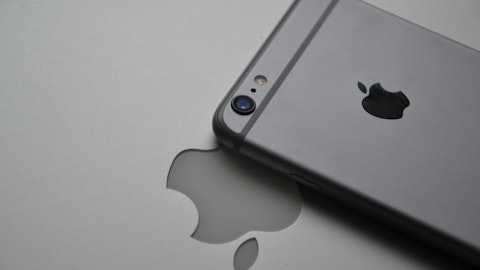Business Overview
AT&T Inc. (NYSE:T) can trace its corporate history back to the invention of the telephone. The company was founded in 1875 by Alexander Graham Bell, Gardiner Hubbard, and Thomas Sanders.
The Bell System became the American telephone monopoly. The monopoly was broken up into 8 companies in 1984 by the Department of Justice.
Today, AT&T is the largest wireless carrier in the United States based on its $242 billion market cap. The company is the 11th largest publicly traded corporation in the United States based on market cap.
AT&T divides its operations into 4 segments. The percent of total EBITDA each segment generated in the company’s latest quarter is shown below.
– Business Solutions generated 50% of EBITDA
– Entertainment Group generated 23% of EBITDA
– Consumer Mobility generated 26% of EBITDA
– International generated 1% of EBITDA
The Business Solutions segment controls the company’s business wireless, data, and legacy voice businesses. 55% Of the segment’s revenue comes from wireless revenues.
The Entertainment Group segment contains the company’s video/ad sales, IP voice/data, and other legacy businesses. 70% of the segment’s revenue comes from video/ad sales.
The Consumer Mobility segment controls the company’s United States wireless revenue.
The International segment is comprised of AT&T’s recent investments in Mexico and DirecTV Latin America.
Growth Prospects
AT&T has grown earnings-per-share at 4.6% a year over the last decade. Dividends have grown at 3.8% a year over the same period.
AT&T actually posted record earnings-per-share highs in 2007 of $2.76. The company is expected to eclipse this number in 2016. Still, growth has been sluggish over the last several years.
Part of the company’s fairly weak growth is the result of changes in the telecommunications industry. Wireless revenue has grown rapidly – while traditional wireline revenue has fallen significantly. Changes in the industry force AT&T to reinvent itself.
The company is spending heavily on acquisitions to grow going forward. AT&T’s large acquisitions over the last few years are shown below:
– $63.0 billion for DirecTV
– $2.5 billion for Iucasell
– $1.9 billion for Nextel Mexico
The company’s growth plans center around expansion into Mexico (and Latin America with DirecTV), and media growth which will increase advertising revenue.
The company’s geographic expansion into Mexico makes sense. It is the next logical growth step for the company geographically, outside of the United States. The International segment is still in its infancy, generating just 1% of EBITDA for the company.
Continued synergies from both cross-selling and cost reductions should help AT&T grow a bit faster over the next several years than it has over the last decade.
AT&T’s management is expecting long-term earnings-per-share growth of around 4% to 6% a year. This is in line with 10 year numbers – and a bit higher at the median. The company’ growth expectations appear reasonably, however.
Competitive Advantage & Recession Performance
A business cannot grow its dividends for 32 (soon to be 33) consecutive years without a strong and durable competitive advantage.
Bell’s monopoly was broken in 1984. But the wireless industry today is the next best thing (for investors) – an oligopoly.
The United States wireless telecommunications market is dominated by the following 4 companies:
– AT&T
– Sprint (S)
– Verizon (VZ)
– T-Mobile (TMUS)
Together, these 4 companies have greater than 90% market share. AT&T and Verizon are the two largest players. Both have greater than 30% market share.
The wireless industry is so concentrated because there are sizeable and significant barriers to entry into the industry.
1. Up-front costs of building infrastructure
2. Wireless spectrum usage costs
3. Scale advantages
4. Brand recognition
AT&T benefits from all of these. The company has a strong and durable competitive advantage.
To give an idea of the amount of cash required to compete in wireless spectrum usage, wireless spectrum auctions regularly raise $30 to $40 billion, with the bulk of that paid by the largest players (AT&T and Verizon).
Costly spectrum auctions make it impossible for businesses without massive capital to take part in the industry.





